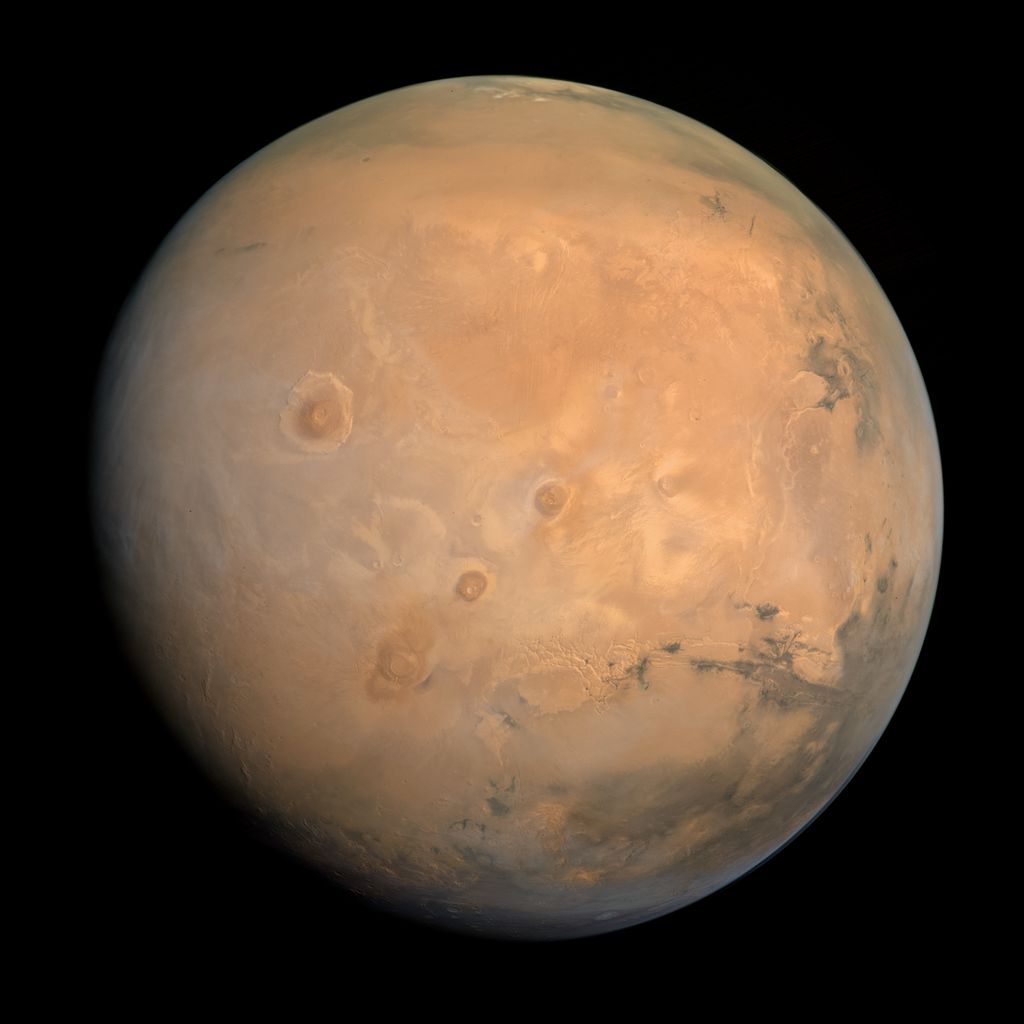Scientists Propose Revolutionary Way To Warm Up Mars
A team of scientists has proposed a fascinating approach to terraforming Mars. If successful, this approach could significantly impact future colonization plans and potentially lead to the emergence of water on the red planet.
The study proposes that scientists introduce specific nanoparticles into the Martian atmosphere, which could increase the planet’s temperature by up to 10°C in months, potentially making the Red Planet hospitable for water.
Humanity’s Plan to Colonize Mars
As advancements continue to be made in space exploration, agencies around the world are beginning to plan manned expeditions to the Moon and even Mars, which would essentially kickstart the colonization of the solar system.

Source: Wikimedia
NASA is set to send astronauts back to the Moon in September 2026 as part of the Artemis III mission. However, so far as landing on Mars, proposed manned missions are not set to take place until at least the 2040s.
Elon Musk and His Mars Dream
Despite NASA’s estimations, influential billionaire and founder of SpaceX, Elon Musk, believes astronauts could land on the surface of Mars sooner than initially expected.

Source: Wikimedia
Musk, who’s been a long-time proponent of taking humans to Mars, claims humans could make it to Mars in the next decade, and a full-blown settlement is less than 20 years away. “For sure, in 30, civilization secured,” he added.
Why Haven’t Humans Made it to Mars?
Several challenges must be overcome before space agencies can safely send astronauts to Mars. These issues, including dangerously high levels of radiation, a thin atmosphere, and the distance from Earth, present significant hurdles that researchers are working to address.

Source: Wikimedia
However, one obvious factor is the lack of water on Mars. Without a viable source of water, colonization on the planet would be almost impossible.
Researchers Aim to Terraform Mars
A new study aims to solve at least one of the current problems prohibiting humanity from color-lining Mars. Researchers believe they have finally figured out how to provide the red planet with a source of water.

Source: Freepik
The researchers process a revolutionary approach that could essentially terraform Mars, raising its global temperature to a threshold suitable for the emergence of water.
Scientists Claim Water May Emerge on Mars
A team of researchers from the University of Chicago and the University of Central Florida detail how certain particles could heat up the Red Planet by over 10 degrees Fahrenheit in just a few months.

Source: Freepik
The end result may be terraforming Mars, resulting in a planet that is hospitable to water, a vital component of life and essential for any further colonization attempts.
How Scientists Plan to Terraform Mars
The process involves utilizing resources already present on Mars. Teams of researchers will produce small particles using dust from the Red Planet, which is rich in iron and aluminum.

Source: Wikimedia
These particles would spread throughout the Martian atmosphere, trapping the heat escaping from the planet’s surface. In turn, this would bolster the weak greenhouse effect on Mars, effectively warming the planet in the process.
Humans May Colonize Mars Sooner Than Expected
Colin McInnes, a space engineer at the University of Glasgow who did not participate in the new study, shared his opinion on the terraforming idea. He pointed out that such projects could essentially allow humans to colonize Mars sooner than expected.

Source: Wikimedia
“It’s not that often you get some quite new, innovative idea for terraforming,” he said.
Millions of Nanoparticles Required to Keep Mars Warm
The researchers created the nanoparticles, which are equal in size to commercial glitter, and concluded that they trap heat more effectively than the dust of the Red Planet.

Source: Wikimedia
“You would still need millions of tons to warm the planet, but that’s five thousand times less than you would need with previous proposals to globally warm Mars,” said Edwin Kite, a co-author of the new study.
Scientists Suggest It May Take Decades to Create the Particles
Researchers estimate that creating a sufficient number of nanoparticles may take decades. But it’s the most feasible plan ever proposed.

Source: Freepik
“This suggests that the barrier to warming Mars to allow liquid water is not as high as previously thought,” said Kite, an associate professor of geophysical sciences at the University of Chicago.
Problems Yet to Be Assessed
The researchers admit several complications may arise, one of which is their uncertainty about how long the nanoparticles would remain in the atmosphere. “Climate feedbacks are hard to model,” Kite said.

Source: Freepik
The researcher explains that data will have to be collected from both Earth and Mars in order to say with certainty how effective the particle would be in the long term.
A Huge Step Forward
However, the new study is a significant leap forward in humanity’s quest to venture to Mars and colonize the planet. It has sparked a great deal of excitement and anticipation in the space exploration community, inspiring further research and innovation.

Source: Wikimedia
“This research opens new avenues for exploration and potentially brings us one step closer to the long-held dream of establishing a sustainable human presence on Mars,” Kite concluded.
